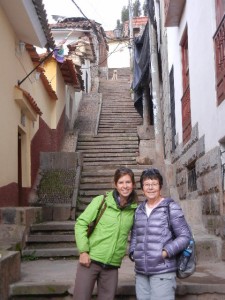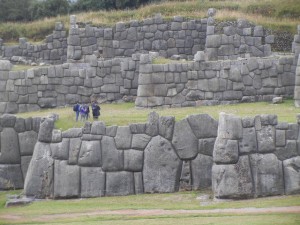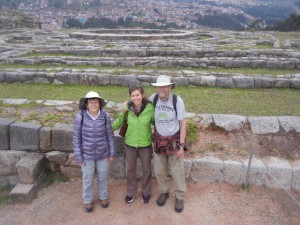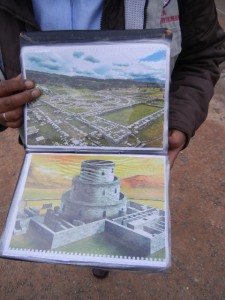6 May: Although the Spanish called Saqsayhuaman a fortress, it was really a large temple complex on a hill overlooking Cusco. It is a prime example of the renowned Incan walls of carved stone fitted tightly together. We walked up from our B&B to see it and took a tour with one of the guides. Peru has a five-year university degree program in tourism leading to certification, and the information they impart at the archaeological sites enriches the experience greatly for the visitors. Saqsayhuaman was built of granite, which makes the cutting and sculpting of the building stones all the more impressive considering that the Incans did not have metal tools. The complex consisted of three levels, with ceremonial buildings on top. The stones of the lowest level are huge indeed. Even though the Spanish destroyed the buildings and removed many of the smaller stones for their colonial period cathedrals and other buildings, much of the walls and the foundations of the original buildings at Saqsayhuaman are still in excellent condition. We then walked to the nearby ruins of a smaller set of walls and buildings known as Q’enko. This site is thought to have been used for the ceremonial preparation of a deceased Incan ruler’s body for mummification and burial.



